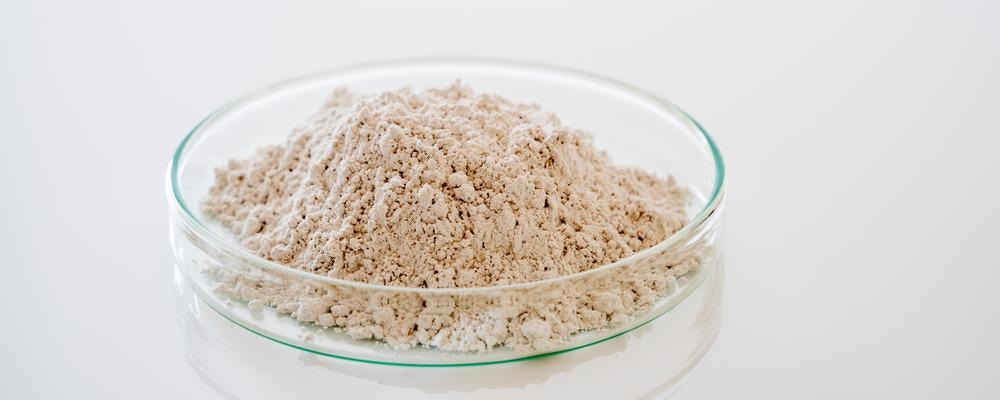Natural carbonates have been prime building materials for centuries, but synthetic carbonates are a modern, robust building material, created via mineral carbonation.

Image Credit: Pavel_Voitukovic/Shutterstock.com
Mineral carbonation (or mineral sequestration) is one of the greatest and most energy-efficient means for the utilization of CO2. By 2040, Australia-based Mineral Carbonation International aims to store 1 billion tons of CO2 in building construction materials.
During the chemical process, CO2 reacts with metal oxides such as magnesium or calcium oxides to create carbonates. It is used to take waste CO2 and make construction materials, rather than releasing the harmful greenhouse gas in the atmosphere and exacerbating global warming.
As the chemistry of making carbonates based on calcium and magnesium is well understood, solid carbonates are widely used in construction materials. Carbonation allows large amounts of CO2 to be taken in by the materials through chemically incorporating it into stable mineral carbonates as a binder.
The process achieves significant CO2 uptake of around 7-12% according to a published study led by S. Monkman and Y. Shao. Happening thermodynamically, relatively little external energy is required during the process, making it more sustainable. The results are high-quality as well. Carbonated cementitious materials that sequester CO2 can result in high-strength building materials.
What is mineral carbonation?
Video Credit: Orica/YouTube.com
A Natural Process at Heart
Mineral carbonation is being utilized in the building industry, but it naturally occurs in rocks underground. It is a geological weathering process where stable carbonates are created through the interaction of CO2 with natural oxides or silicates such as magnesium iron and calcium. Igneous rocks that naturally harness abundant silicate minerals such as olivine and serpentine contribute to mineral carbonation, both naturally or synthetically, to create building materials.

Image Credit: luchschenF/Shutterstock.com
A study published in Nature, led by Dr. Tim Tomkinson, explains “carbonation is the water-mediated replacement of silicate minerals, such as olivine, by carbonate, and is commonplace in the Earth’s crust. This reaction can remove significant quantities of CO2 from the atmosphere and store it over geological timescales.”
Plasterboard can be made by combining CO2 with the mineral serpentinite. This would be a negative emissions building material, having stored more CO2 within it than what was used to make it.
Limitations to Mineral Carbonation
According to a review of mineral carbonation technologies to sequester CO2, mineral carbonation is a promising form of carbon capture and storage (CCS) when storage in geological structures is not considered viable. However, there are some limitations, as it highlights that “the technology is still in its infancy and transport and storage costs are still higher than geological storage in sedimentary basins ($17 instead of $8 per tCO2)… its application is currently limited by its high costs... energy use, the reaction rate and material handling are the key factors hindering the success of this technology.”
However, recent advancements in scientific research show potential to cut costs of mineral carbonation, making it a more economic and viable solution for the future.
Key challenges for its application in the building industry are also in relation to the slow dissolution (dissolving) that occurs in the material and the energy requirements involved in the mineral processing. Even so, the limitations do not mean that mineral carbonization is not showing promise for the decarbonization of the building construction sector.
Sustainable Benefits are Far-Reaching
Sustainability for building construction is boosted when concrete is crushed to aggregate, due to the higher surface area of the small pieces, allowing more CO2 to be absorbed. More CO2 is taken in by the aggregate when exposed to rain, due to the chemical leaching that would occur, and when the aggregate is recycled for paving or even pottery. The process remains environmental even at the end of its lifecycle.
Mineral carbonation reabsorbs approximately one-third of CO2 emitted when making cement, reducing the CO2 footprint of the cement use in the industry. The sustainability of the system can be stretched even further, as alkaline waste from industry can also be used for mineral carbonation, such as ash from waste incineration or slag from steelmaking.
Mineral Carbonation International has designed and created three carbon reactor systems, including the world’s first global reference pilot plant in Newcastle, Australia, transforming waste materials and greenhouse gas emissions created by diverse industrial processes.
References and Further Reading
Concrete carbonation [Online]. The concrete center. Available at: https://www.concretecentre.com/Performance-Sustainability/Circular-economy/Whole-life/Carbonation-of-concrete.aspx
Tomkinson, T., Lee, M., Mark, D. et al. (2013). Sequestration of Martian CO2 by mineral carbonation. Nat Commun 4, 2662. Available at: https://doi.org/10.1038/ncomms3662
A. Sanna, M. Uibu, G. Caramanna, R. Kuusik and M. M. Maroto-Valer. (2014) A review of mineral carbonation technologies to sequester CO2. Chem. Soc. Rev, 43, 8049-8080. Available at: https://pubs.rsc.org/en/content/articlehtml/2014/cs/c4cs00035h
Mineral carbonation [Online]. Science Direct. Available at: https://www.sciencedirect.com/topics/engineering/mineral-carbonation
S. Monkman and Y. Shao (2006). Assessing the Carbonation Behavior of Cementitious Materials. J. Mater. Civ. Eng. 18, 768–776. https://doi.org/10.1061/(ASCE)0899-1561(2006)18:6(768)
Bruce G. Miller. (2011) 10 - CO2 Capture and Storage. Clean Coal Engineering Technology, Butterworth-Heinemann, Pages 483-511, ISBN 9781856177108. Available at: https://doi.org/10.1016/B978-1-85617-710-8.00010-8.
Mineral carbonation to produce construction materials [Online]. Chapter 5. The National Academies Press. Available at: https://www.nap.edu/read/25232/chapter/5
An expert explains: How to turn industrial carbon emissions into building materials [Online]. We Forum. Available at: https://www.weforum.org/agenda/2020/11/an-expert-explains-how-to-turn-carbon-into-useful-building-materials/
Disclaimer: The views expressed here are those of the author expressed in their private capacity and do not necessarily represent the views of AZoM.com Limited T/A AZoNetwork the owner and operator of this website. This disclaimer forms part of the Terms and conditions of use of this website.